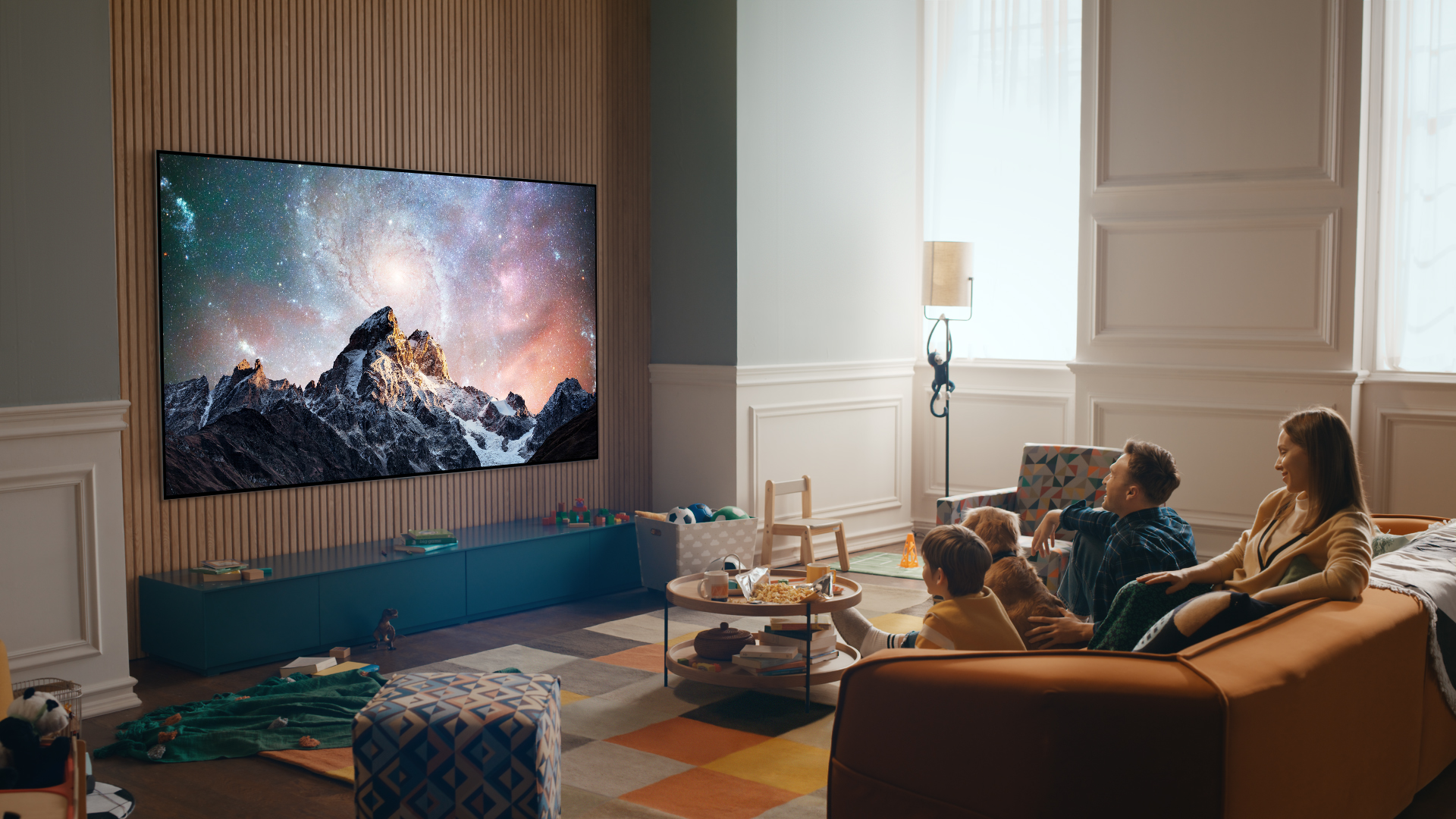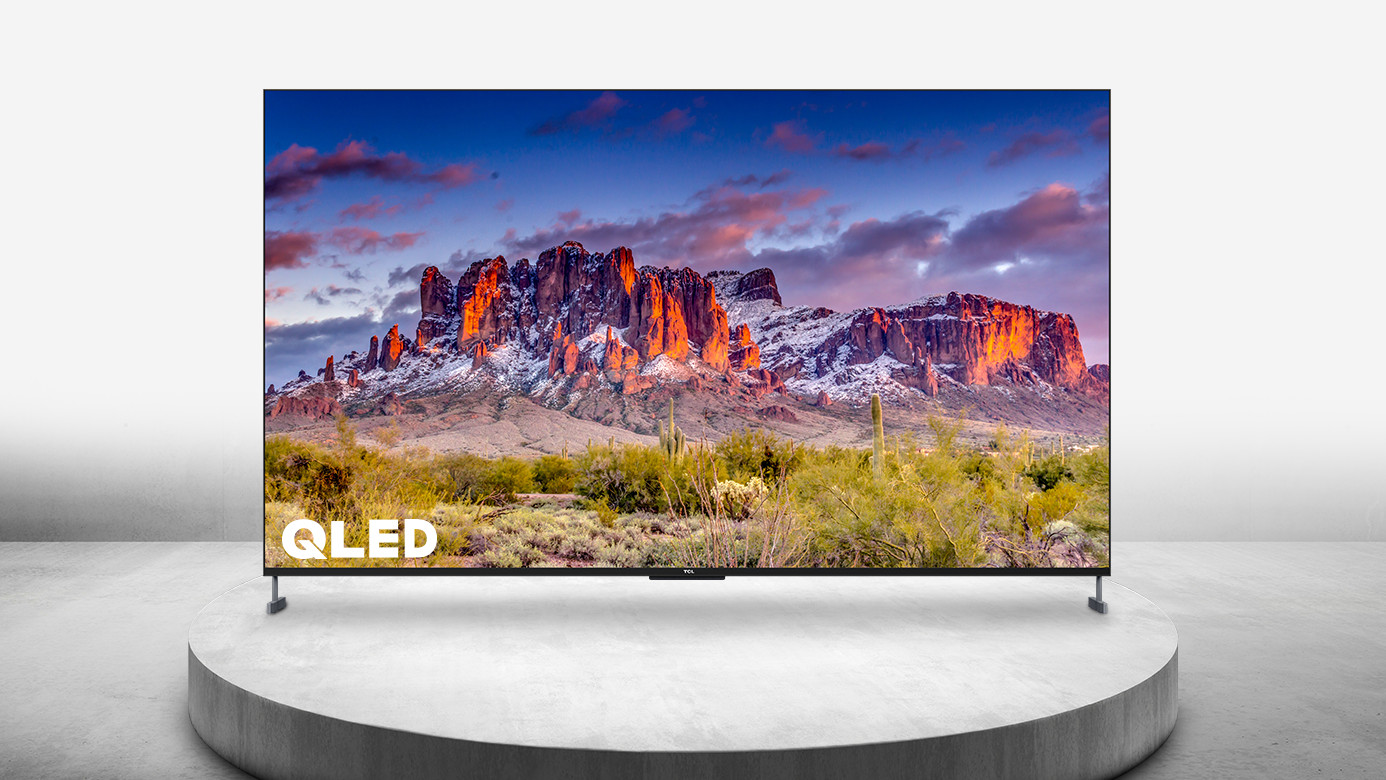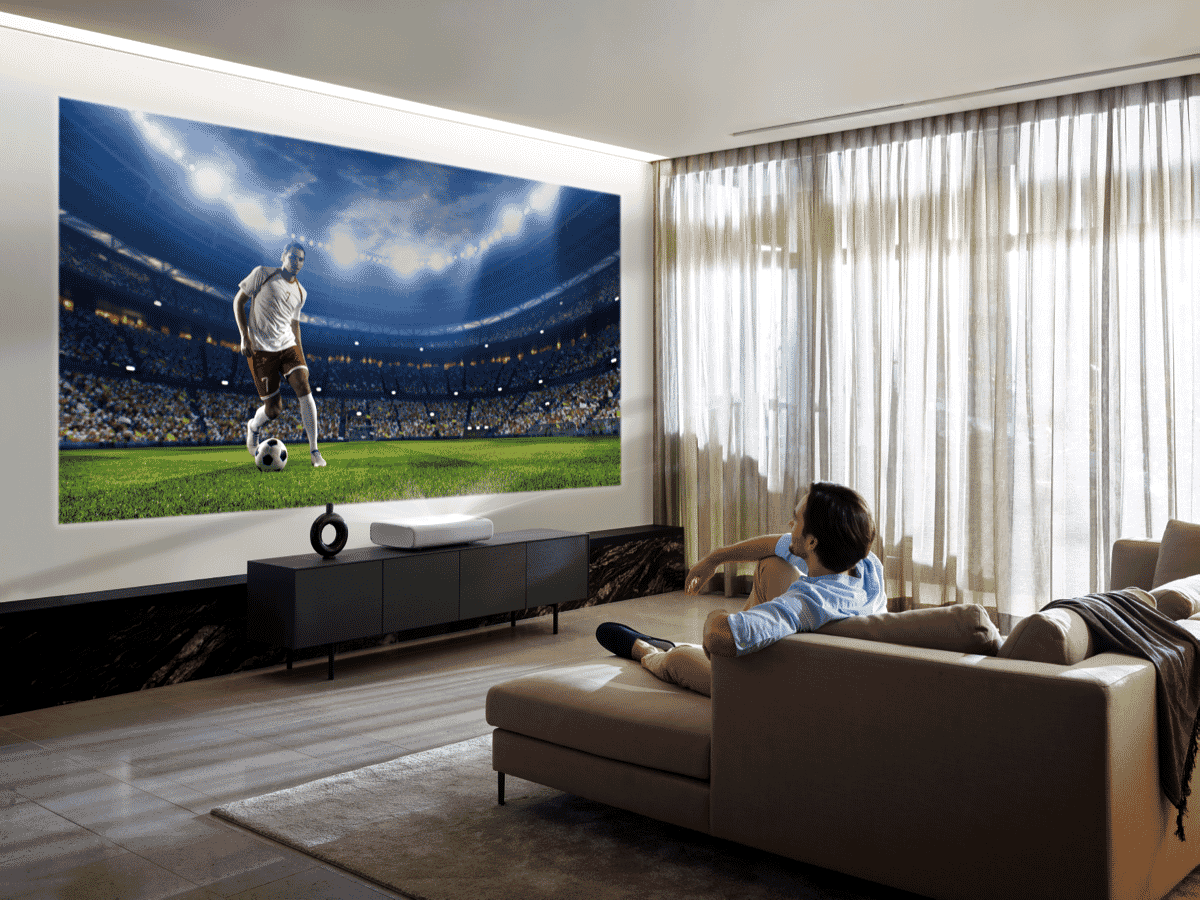
For as long as I’ve been covering TVs, TV makers have been pushing the narrative that people enjoy bigger screens - a pretty safe assumption, honestly - and that’s why they’ve continually introduced larger and larger screen sizes to meet demand.
A few years ago that meant a big push for 75-inch TVs. Then 85 inches. This year we’re looking at 97-inch screens from LG, TCL, Samsung, and more.
But are we ready for screens that big? Do we even have the space and budget for them, or are these TVs simply for the ultra-wealthy?
Here’s the hidden issues with buying a screen the size of your wall.
2022 is the year of mass-production 100-inch TVs
The continuous roll out of larger and larger screens has, until now, really been a blessing for cinephiles. We’ve been able to get 65- and 75-inch TVs for under two grand for the past few years, and now we’re seeing 85-inch TVs come close to reaching that price point, as well.
That’s driven down the cost of 55-inch TVs and 40-inch TVs, all the way down the line.
It's a very reasonable expectation that the same will happen when these monstrous new 100-inch TVs hit the market: they'll drive down the cost of the other TVs in the lineup, which is, unequivocally, a good thing.
Get daily insight, inspiration and deals in your inbox
Sign up for breaking news, reviews, opinion, top tech deals, and more.
At CES 2022, we got our first look at some of these new hyper beasts. TCL took the wraps off a 98-inch QLED TV, while LG unveiled a 97-inch G2 OLED. Samsung says its MicroLED TV will now be available in three new “consumer-friendly” sizes of 110, 101, and 89 inches.
I’m obviously excited about these TVs for a number of reasons (they serve as incubators that will help develop several new technologies like MicroLED) but I don’t think most of the world is ready for them - myself included.

The real cost of owning a wall-sized television
So what’s the problem with bigger-screen TVs? Well, if you can have them delivered and set up in the screening room of your Hollywood mansion, then not much.
For most of us, though, that’s probably not the case. In the US, there are some 43 million households that pay rent instead of owning their own place. In the UK, nine of the country’s 67 million residents live within the confines of London. Essentially, there’s not much room in either of these places for a 97-inch screen that has to come down whenever the lease is up.
There’s also the assumption that many of us can even afford these TVs in the first place, which might not be the case considering the five-digit sums that these TVs fetch.
We don’t have exact pricing details for the LG 97-inch G2 OLED, but chances are it’s not going to be anywhere close to affordable. The 77-inch G1 OLED from last year is currently selling for $3,999 / £4,799 (around AU$6,000), which means the 97-inch will probably be double or triple the cost considering how much harder it is to produce OLEDs in the new larger screen size.
Heck, even the more consumer-friendly TCL XXL Series isn’t all that easy on the budget. So far we’ve seen that the 98-inch R754 QLED TV costs $7,999 (around £5,900, AU$11,200), and that’s before you factor in a warranty and setup.
No matter how you slice it, these TVs are going to be expensive, at least for the foreseeable future.

Ultra short-throw projectors might be a better solution, honestly
OK, so 100-inch TVs probably aren’t the ideal solution for most folks due to the price and size restrictions, but you know what might work? Ultra short-throw projectors or laser TVs.
Ultra short-throw projectors deliver the picture performance of traditional projectors and they can sit right up against the wall instead of requiring an awkward ceiling mount system.
Models like Samsung’s The Premiere deliver all the specs and modern conveniences of a 4K smart TV. For $3,500 / £3,999 (around AU$4,900), you’re getting a maximum screen size of 120 inches and a 2.2-channel speaker system. You will miss out on the color vibrancy of an equivalent QLED TV, but there’s no way you’ll be able to get anywhere close to this screen size for that price.
Admittedly, there are some conceptual designs that should solve the space issue I’ve pointed out - like LG’s new rollable OLED TV - but those aren’t quite ready for the mainstream yet.
Ultimately, there’s always a trade-off to make when buying a new technology. You can either have something cutting-edge and expensive, or something older and cheaper. You shell out for a large-screen TV or save money by buying something more reasonably priced. You can’t, however, suddenly change where you live just to accommodate a 100-inch TV, nor is it easy to suddenly change your budget from two grand to almost $10,000.
If you have the housing stability, space and the budget for these new super-sized screens, that’s wonderful. But, for the rest of us, 100-inch TVs aren’t the future we’re ready for quite yet.
- Interested in the highest resolution instead? Check out our guide to the best 8K TVs
Nick Pino is Managing Editor, TV and AV for TechRadar's sister site, Tom's Guide. Previously, he was the Senior Editor of Home Entertainment at TechRadar, covering TVs, headphones, speakers, video games, VR and streaming devices. He's also written for GamesRadar+, Official Xbox Magazine, PC Gamer and other outlets over the last decade, and he has a degree in computer science he's not using if anyone wants it.
